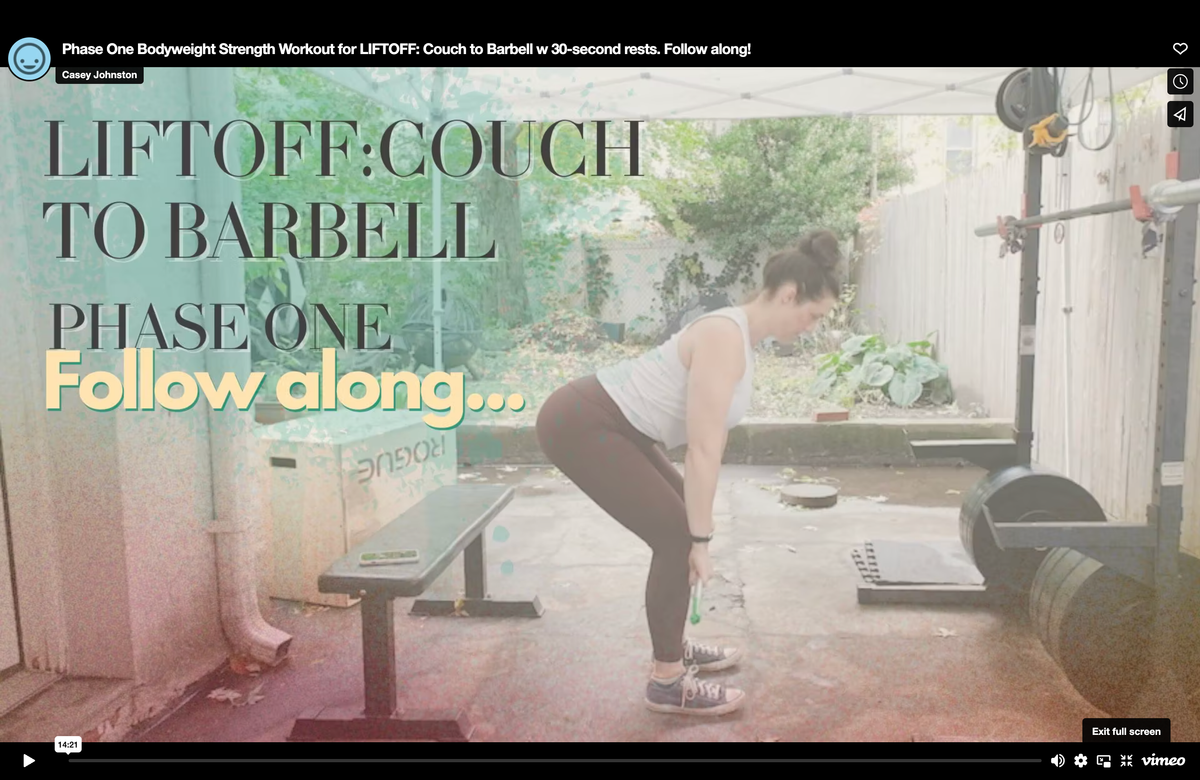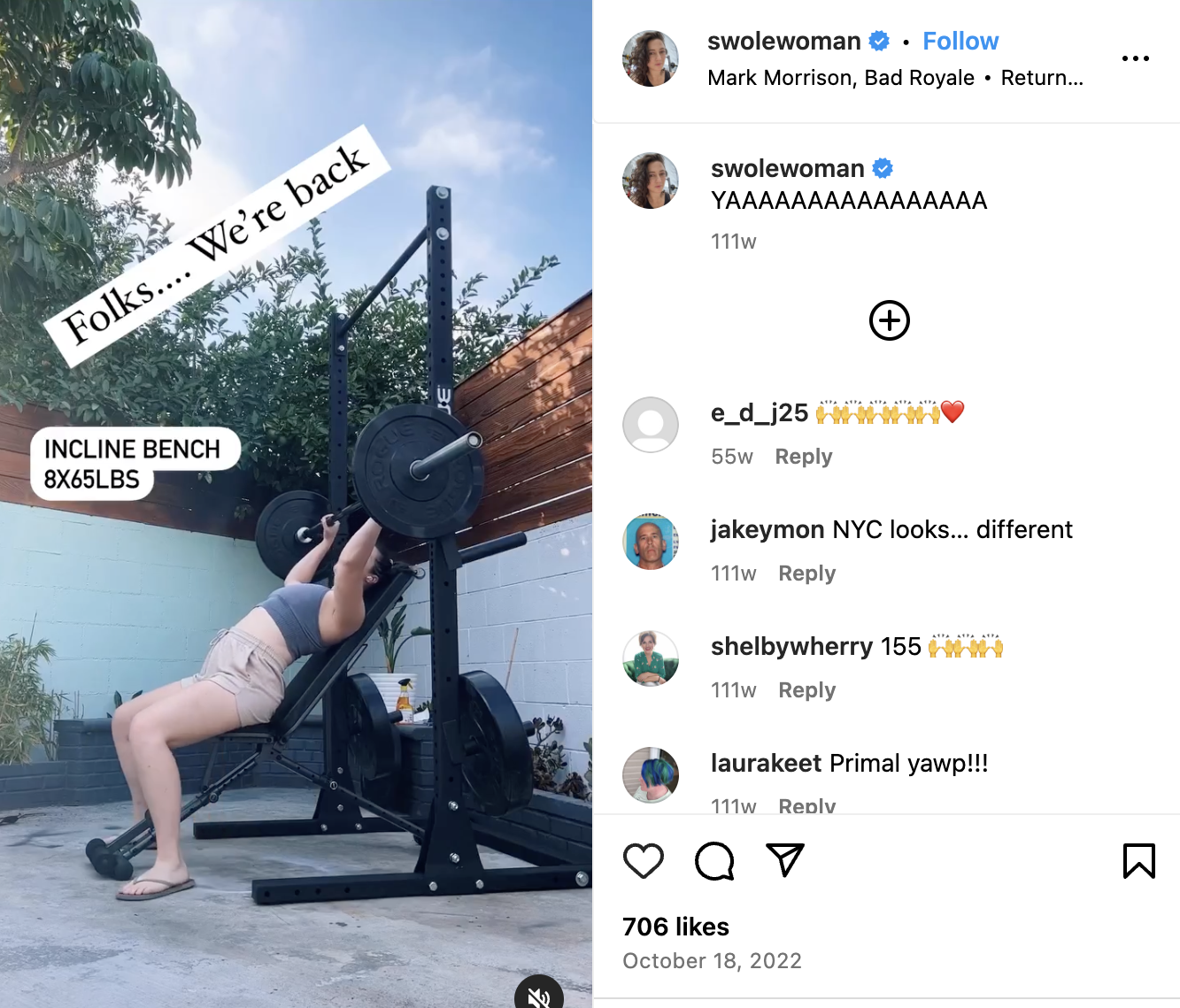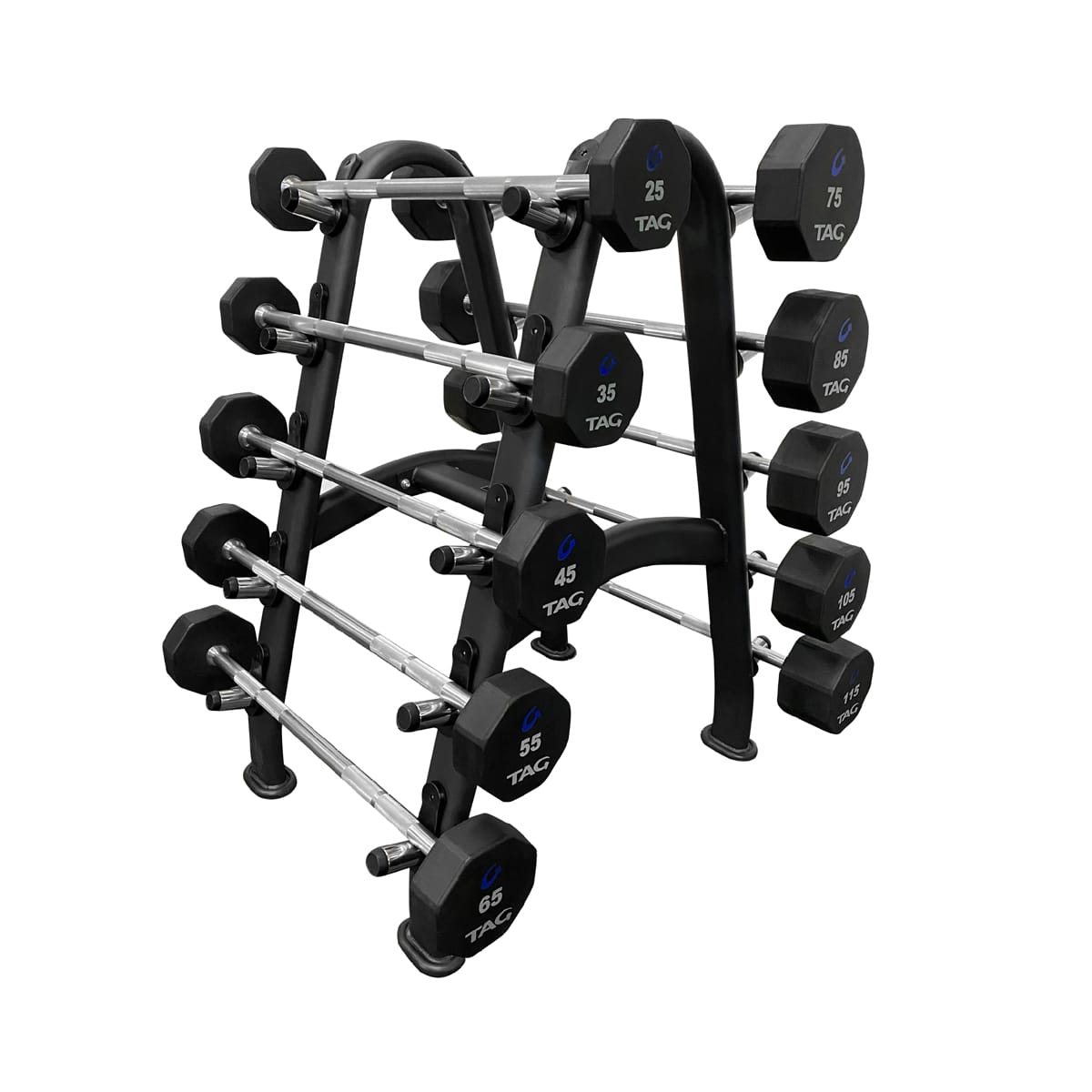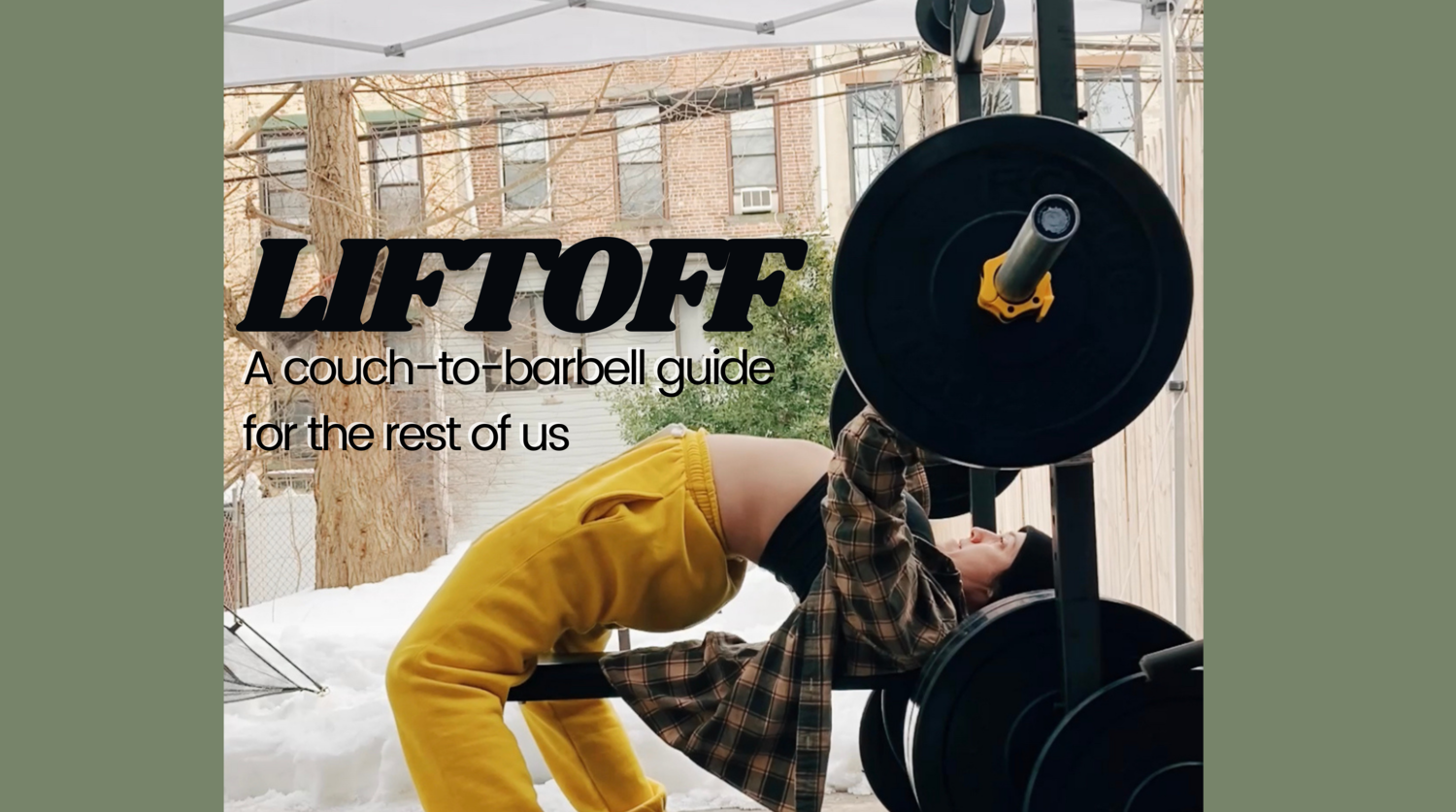What even is a dumbbell?: Demystifying LIFTOFF Phase Two

If you joined us on the LIFTOFF journey starting at the beginning of this year, you would already be one of three months down! Congratulations on making it through Phase One; I trust you are now staring down Phase Two with a flinty resolve. (And if you didn't start at the beginning of this year: No time like the present to start coping with endorphins.)
In Phase One, you were doing all bodyweight movements, perhaps with the help of a Swiffer or broomstick or PVC pipe (declare your allegiances in the comments). In Phase Two, we add dumbbells to the mix.

What even is a dumbbell, as opposed to a barbell? Dumbbells are the weights of various sizes that you hold in your hands as you work out, usually as a pair (though not always). They are not barbells (the big long iron rods that you load onto your shoulders, or bench), nor are they “fixed barbells” (those shorter, 4-ish-foot-long weights that stand in an A-frame rack and are sometimes bent in a zigzag).



The book of LIFTOFF (paper, ebook) has plenty of instructions on how to do Phase Two and its various movements. But there are also a handful of frequently asked questions that come up if you are less familiar with these tools and working in a gym. Below, we’ll tackle some of them to help you make the transition as flawlessly as possible.

What if there are only dumbbells in 5-pound increments?
In LIFTOFF, we get stronger by adding a little weight to our lifts every session--5, 10, or even 2.5 lbs. Sometimes you get lucky and the dumbbells at your gym come in 2.5-pound increments (10, 12.5, 15, 17.5, and so on). Sometimes, you are not so lucky. When you’re still a fledgling lifter, even these small increments are large relative to your overall strength—squatting while going from holding a set of 10lb dumbbells to 15lb dumbbells, or from 20 pounds to 30 pounds, is a 50% increase in weight. It is possible to make that transition, but may be difficult for some.
If you find yourself in a position where the 10lb set is not quite challenging enough, but the 15lb is way too hard, you can work up in reps until you are ready for the next weight increment. If you were able to do sets of 5, try sets of 6 or even 7 next week, then sets of 8, then sets of 9, and so on. You can give the 15s a try again any time, but once you can do sets of 10 with the 10s, try to do a set of 5 with the 15s. Keep going with the reps, even, if you need, to get to the next weight. You can do this any time you meet a weight you can’t quite handle yet.
Where do I stand in the gym, with the dumbbells?
This will vary from gym to gym, but anywhere there is room. This is why a dedicated recon session at the gym can be helpful: You can just watch where other people stand and follow their lead. Ideally, wherever you do end up standing, there will be a decent amount of room around you, so if you were to drop the dumbbells they wouldn’t bounce into someone.
Oh no I’m about to fail and have to put the dumbbells down right now, RIGHT NOW WHAT DO I D—
See, this is why ideally you stand where there’s some room around you. Try to control the dumbbells down to the floor as best you can without hurting yourself. Sometimes the position is too awkward to not drop them, like if you are lying down on a bench. If you need to let them fall from a certain point, that’s okay. It might be loud, but that is not illegal. If they do bounce into someone, apologize profusely, as profusely as you’d want to be apologized to if a dumbbell bounced accidentally into you.
I have to go pee. How do I show that I’m not done using my dumbbells even if I walk away from them? If someone takes them I will have to wait 15 minutes all over again.
Nestle them next to a bench with your water bottle and/or towel on it, or just put them next to those objects. This is an appropriate indication of “in use.” If someone took them in that situation, they would be rude to do so. If you see your dumbbells in use when you come back, you would be within your rights to go up to the thief and say, “sorry, did you want to work in?” or “Hey, sorry, I was using those, but I only have [x] more sets left if you want next!”
If you are the more passive aggressive type, you could also say nothing and instead go up to the bench and slowly, deliberately, obnoxiously grab the stuff you left that was meant to indicate the dumbbells were in use, while maintaining uninterrupted eye contact with the interloper. This probably will not get you the dumbbells back, however if you are the passive aggressive type, it will feel good inside.
I’ve progressed to dumbbells so heavy that I physically can’t get them up to lift them anymore (especially to squat), but I’m not ready and/or too scared of the barbell and the racks and the plates and aahhh!!
This trick may help you:
We can't have bots here.
Let's see some ID. (Just your real email, please.)


